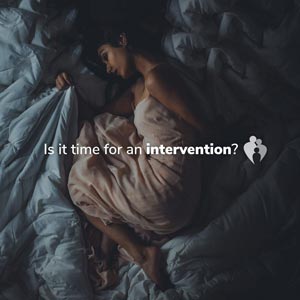No.
Society seems to have created an auto-response for dealing with someone addicted to drugs or alcohol. When families ask for guidance, the response invariably comes back, “There’s nothing you can do unless your loved one wants help or hits bottom.”
Oftentimes, the next piece of advice offered is, “Throw him out of the house,” or, “Cut him off and have him call when he’s ready.”
Sadly, this advice frequently comes from those answering phones at a treatment center. Many family members say they have called many places and were told, “He has to want it, he has to hit rock bottom. We can’t help him unless he makes the call.”
Please consider the source when asking such questions and the feedback you receive. Individuals operating the phones at the treatment center are neither therapists nor addiction professionals. In many cases, they come from a sales background and may not be educated or have a background in addiction. These folks are trained and paid to speak about their program and not to think outside the box.
Family, friends and colleagues also fall into the category of those without a proper background. In brief, too much advice and too many opinions come from people not qualified to give it. Although they may have pure intentions, non-professionals are often clueless about the topic of addiction.
People say that addicts and alcoholics “have to hit rock bottom” as if they know what that means. Bottom is different for everyone. Simply put, someone reaches rock bottom when things get worse faster than the standards get lower. What may be bottom to some isn’t necessarily bottom to an addict or alcoholic who has adapted to each and every crisis that came along.
Until the pain and the consequences of abusing drugs or alcohol become greater than the fear of facing sobriety, the loved one most likely will not stop. Some seek help after one DUI; others are in prison on their fifth DUI, planning a party upon their release. Some are serving lengthy prison sentences for vehicular manslaughter while intoxicated.
The first step in asking for help is admitting powerlessness over the substance of choice and that life has become unmanageable. Up to that point, loved ones have managed their addictions, their lives and their families in ways that kept them comfortable and consequence-free.
You’ve heard it all before: the bottom is jail, institutionalization or death – and that’s true. Through the intervention process, done on the family’s terms, the bottom can be your intervention and entering treatment.
Jails, institutions and death can be seen as society’s way of performing an intervention. As noted throughout this website, an intervention is going to happen with or without professional guidance.
You, the family, have the ability to create the intervention and provide a non-lethal bottom to your loved one before society imposes one.
Furthermore, families place too much emphasis on when the addict or alcoholic wants help or hits bottom. When does the family get to declare, “Enough!” and that they’re at bottom and ready to accept help?
A family doesn’t have to wait for their loved one to change. An intervention is a family’s way of beginning their own treatment program when they’ve had enough.
Addiction has the entire family turned upside down with all of their energy, time and focus on the loved one’s problem. As a result, family members have lost sight of their own wants and needs. The addict or alcoholic has selfishly taken everything possible from you, and out of fear, in most cases, you’ve allowed it.
Oftentimes, people say that interventions won’t work, that addicts or alcoholics have to want it. Interventions are not about strong-arming loved ones into treatment. Interventions help to “raise the bottom” and guide them toward asking for and wanting help.












 All Rights Reserved |
All Rights Reserved |